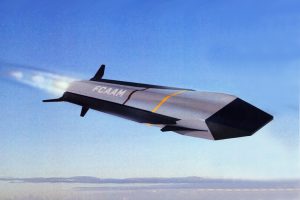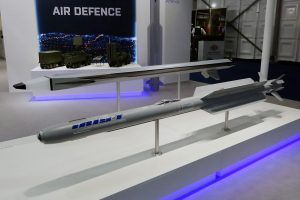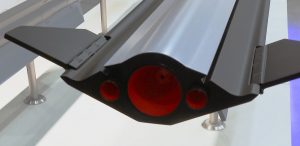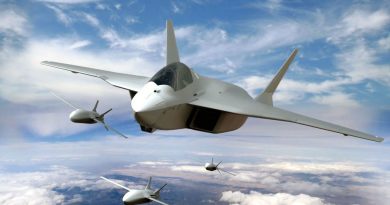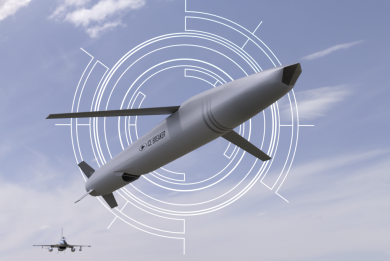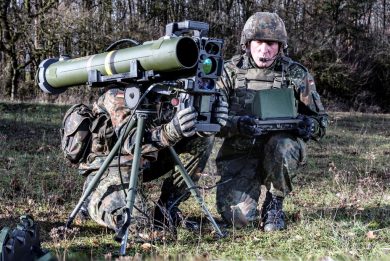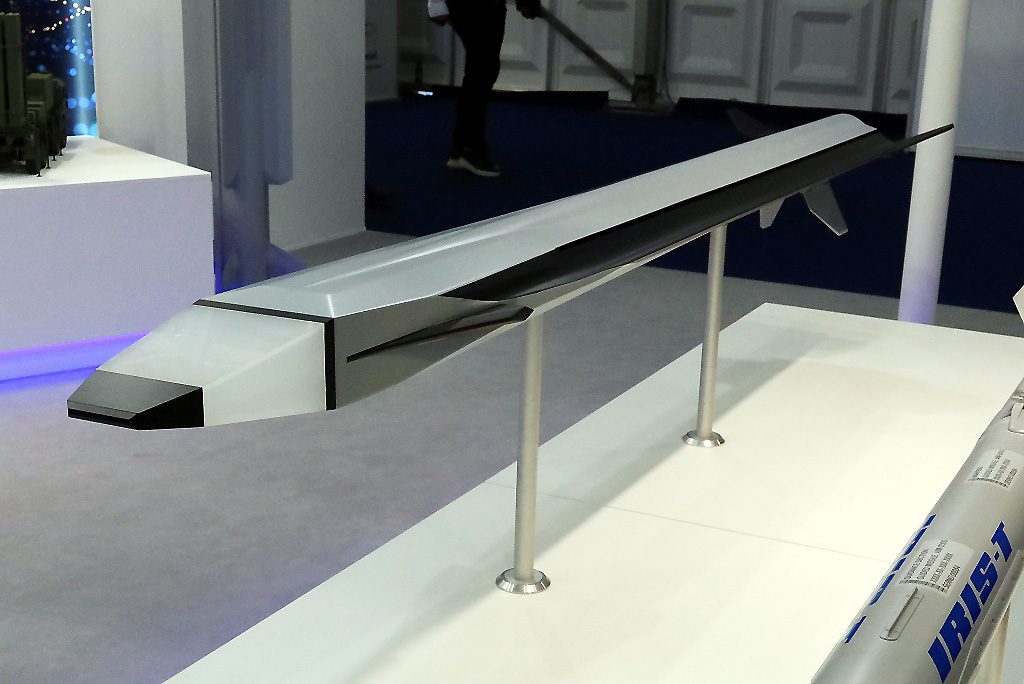
IRIS-T FCAAM: the future SRAAM 6th generation missile by Diehl Defence
Until now most if not all short-range air-to-air missiles had a cylindrical body. In the future we might get used to a wholly different shape, if the concept missile shown by Diehl Defence will become a real product. Known as IRIS-T FCAAM, for Future Combat Air-to-Air Missile, it has roughly the size of an IRIS-T, which it might replace in the future, and is designed to become the short-range weapon of the future French-German-Spanish FCAS/SCAF. Should European future air combat systems remain two, the Diehl Defence 6th generation SRAAM will also quite certainly become the short-range weapon of choice of the other FCAS, that under development by the United Kingdom, Japan and Italy, as it would be suicidal for the European defence system arming the two different manned aircraft with different weapons of similar categories.
The IRIS-T FCAAM body has a rectangular section with strakes along the upper sides of the body, with a pyramidal nose containing at its extremity the seeker, which according to the company will remain a multi-spectral IR one but more sophisticated than the one used in the 5th generation IRIS-T as it will include some Artificial Intelligence-based algorithms. The rear fins are not fitted in a symmetric way as we are used to see; the upper ones have a wide angle between them, their extremities being aligned with the missile body in order not to generate issues when the missile is hosted in a weapons bay, while the two fins under the body are much closer to vertical.
A data-link will allow updating the missile using platform-based sensors, not necessarily the radar of the aircraft that launched the FCAAM but the best data provided by the distributed sensor cloud obtained through the network. Algorithms will have machine learning capabilities, the seeker being also able to autonomously identify the target in order to select the best aiming point. Not much was said on the warhead, however the company talks about “autonomous warhead conversion depending on target” which should mean that the aforementioned identification capability would also allow the FCAAM to select the best detonation mode according to the type of target.
This will allow to maintain the missile locked on its target in dog fight situations providing the largest possible No-Escape Zone fort this category of air-to-air missile. A key element for this will be propulsion; instead of the one-stage solid propellant rocket motor used on the IRIS-T, the FCAAM will be most probably fitted with a multiple-stage motor. This will not only increase range, around 20 Nautical Miles (37 km versus the 25 km of the current IRIS-T), but will most importantly allow to keep some energy for the last engagement phase which, coupled with the intelligent thrust vectoring system, will provide considerable end-game manoeuvrability.
As for speed, the IRIS-T FCAAM will remain under Mach 4, as according to Diehl Defence sources higher speed would be a disadvantage for the IR multi-spectral seeker. The AI-based seeker will be inherently resistant to InfraRed and Direct InfraRed Countermeasures (IRCM/DIRCM), according to the company.
For the time being the FCAAM remains at concept stage, however EDR On-Line understood that Diehl Defence has carried out a considerable number of computer simulations especially for the end-game phase to verify manoeuvrability issues.
Image courtesy Diehl Defence, photos by P. Valpolini

